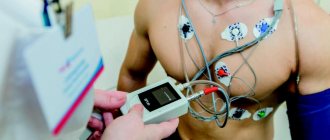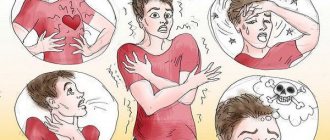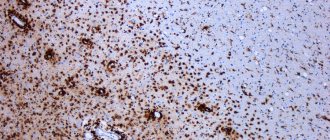Restless legs syndrome (RLS) is a condition characterized by unpleasant, painful sensations in the lower extremities, which appear mainly at rest (usually in the evening and at night) and force the patient to make movements that relieve them, which leads to sleep disturbance.
Medical statistics state that worldwide, from 10 to 25% of the entire adult population have some form of RLS. RLS occurs in all age groups, but is more common in middle and old age. Sometimes remissions may occur, during which the symptoms weaken significantly or disappear altogether. However, symptoms usually reappear after some time and get worse over time. RLS accounts for approximately 15% of cases of chronic insomnia.
Causes
In most cases, RLS occurs in the absence of any other neurological or physical disease. RLS can be primary (ideopathic) or secondary (associated with various pathological conditions).
Medical conditions that may cause secondary RLS.
- Pregnancy
- Peripheral neuropathy
- Iron deficiency
- Radiculopathy
- Kidney failure
- Parkinson's disease
- Spinal cord injuries
- Diabetes
- Postgastrectomy syndrome
- Rheumatoid arthritis
- Abuse of strong drinks, coffee, tea and smoking.
It should be noted that not all patients with these conditions experience RLS. Sometimes there are familial cases when the disease is observed in several generations.
Leg tremors. Causes
Limb tremors are involuntary, uncontrolled movements caused by the rhythmic alternation of muscle contraction and relaxation. Tremor is considered the most common movement disorder in patients. This symptom has a direct connection with motor activity disorders and requires an analysis of the causes of occurrence and developmental features.
If tremor of the arms and legs bothers an adult for more than two weeks, you should seek help from a doctor. At the Yusupov Hospital, patients with leg tremors are seen by neurologists. The doctor will conduct a diagnosis and determine whether pathological processes are occurring in the patient’s body. Leg tremors are less common than hand tremors. This is due to the fact that the load on the legs is stronger and there is difficulty in noticing the tremor itself.
Physiological tremors of the arms and legs can occur in situations of stress or other emotional outbursts that lead to overexcitation of the nervous system. The body produces norepinephrine, a hormone that causes stimulation of the nervous system, which gives the effect of trembling of the limbs. The causes of this type of tremor may be:
- excessive alcohol consumption;
- active smoking;
- consumption of products containing caffeine;
- stressful situations;
- depression;
- strong emotions, excitement;
- in newborns with colic, teething;
- in adolescents during puberty.
Physiological tremor is not a pathology and does not require treatment. Most often, it passes very quickly and does not bring significant discomfort to the person. If the tremor persists for more than two weeks, you should see a specialist. At the Yusupov Hospital, patients with symptoms of tremor are examined by neurologists.
Very often, tremors of the arms and legs turn out to be a symptom of more serious diseases. The causes of this type of tremor may be:
- accumulation of copper in organs and tissues of the body;
- thyroid diseases;
- Parkinson's disease;
- multiple sclerosis;
- liver and kidney failure;
- poisoning with salts of heavy metals;
- medication overdose;
- chemical poisoning;
- heredity;
- traumatic brain injuries;
- cervical osteochondrosis;
- brain tumors;
- infectious diseases.
Symptoms
First of all, RLS is characterized by the appearance of unpleasant sensations in the lower extremities . This is most often not pain, but itching, trembling, burning, stretching, a feeling of internal tension, fullness, tingling and twitching in the depths of the legs, thighs, and feet. These sensations occur in waves, every 5-30 seconds. They usually occur at rest: while sitting or lying down, and especially when falling asleep. To alleviate their condition, patients are forced to stretch and bend their limbs, shake, rub and massage them, toss and turn in bed, get up and walk around the room, or shift from foot to foot. During movement, the unpleasant sensations weaken or pass, but as soon as the patient lies down, and sometimes just stops, they intensify again.
RLS symptoms are circadian in nature, i.e. have a clear circadian rhythm , appearing or intensifying in the evening or night hours: between 18 pm and 4 am. Before dawn, symptoms weaken and may disappear altogether in the first half of the day. In severe cases, the characteristic circadian rhythm disappears and symptoms become permanent. They can occur not only in a supine position, but also in a sitting position and can make visiting a movie or theater, or a long trip in public transport unbearable.
The consequence of unpleasant sensations in the legs and the need to constantly move them is sleep disturbance - insomnia . Patients cannot fall asleep for a long time and often wake up at night. The consequence of insomnia is drowsiness and fatigue during the daytime.
Periodic movements of the limbs aggravate sleep disturbances in RLS . During sleep, patients experience involuntary rhythmic short-term twitching of the lower extremities every 5-40 seconds. In mild forms, these movements occur within 1-2 hours after falling asleep, in severe forms they can continue throughout the night.
In idiopathic RLS, clinical manifestations persist throughout life, and in most cases there is a tendency for symptoms to slowly increase, although long-term remissions are possible. Severe restless legs syndrome and, as a consequence, poor health, drowsiness, decreased attentiveness, asthenia significantly reduce a person’s quality of life, making him nervous, irritable, and tired.
Tremor of arms and legs in an adult
The most common is trembling of the arms and legs from excitement, but there is also another type of tremor that indicates a serious illness. If symptoms of tremor are detected, you should consult a neurologist. At the Yusupov Hospital, diseases are diagnosed using modern equipment to determine the most accurate results. To identify diseases with symptoms of tremor of the arms and legs, the following measures are carried out:
- video recording using the “rapid” method, high frequency and slow projection of the recording allows you to determine the slightest changes in body position;
- tremography;
- electromyography.
The Yusupov Hospital employs qualified neurologists who, after diagnosis, will select effective treatment.
Why does tremor occur with osteochondrosis, and how to deal with it?
This trembling occurs because the nerve cells in the cervical region, which are responsible for disrupting the activity of individual segments of the spinal column, are irritated.
Why does tremor occur?
It is known that osteochondrosis can form in any part of the spine. Degenerative processes begin to develop in the spinal column, hydrophilicity and destruction of disc tissue occurs, as a result of which they protrude into the intervertebral canal, where pain receptors are located. This position of the discs causes disturbances in the spinal cord, and the conduction of nerve impulses worsens.
Osteophytes often form with osteochondrosis. These bone formations compress the arteries and nerve roots. But not all people with this disease experience tremor. In approximately 90% of cases, this is due to pinching of the 1st vertebra in the cervical spine. Compressed by bone formations, blood vessels and nerve endings cannot function normally, as a result of which the spinal cord and brain are insufficiently nourished, and this causes trembling of the head and hands. This can be explained more simply: impulses reach the nervous system with a slight delay, which manifests itself in involuntary muscle contraction. The person begins to tremble as if he were cold. It is impossible to control; the tremor occurs unexpectedly.
Who is susceptible to this syndrome?
Often, trembling of the head and hands with osteochondrosis occurs in people over 50 years of age, since at this age the spine begins to deform. But there are cases when this syndrome also occurred in the younger generation if they had congenital or acquired pathologies of the spine. If a person is at risk, then if he has diagnosed osteochondrosis, tremor is more likely to occur.
What can cause tremors:
- Being in a state of prolonged stress.
- Hormonal imbalances.
- Hypertension.
- Drinking alcoholic beverages in large quantities.
- Smoking.
- Surgical interventions on the spine.
- Long car journeys.
- Physical work.
Other symptoms
cervical osteochondrosis
can manifest itself not only as tremors of the head and arms, tremors sometimes occur in the shoulders and neck. And this condition can intensify if a person is very tired, overstressed or emotionally excited.
Often, involuntary twitching of the head muscles can be found along with
- a strong burning sensation in the head, which can spread to the shoulders and chest;
- profuse sweating;
- panic attacks;
- hypertension;
- whistling in the ears;
- stiffness throughout the body.
Is treatment necessary?
If a person is diagnosed with osteochondrosis and the upper limbs or head suddenly begin to tremble, it is necessary to urgently consult a specialist. Only a doctor will be able to conduct the necessary examination and, based on its results, say why the trembling appeared, whether it is somehow connected with degenerative changes in the spinal column or there is some other reason. There is no need to look for recipes for home treatment, and you also shouldn’t hesitate to prevent the condition from worsening.
What drugs can be treated?
When you see a doctor, you will be prescribed medications to alleviate the condition:
- drugs with anticonvulsant effect;
- medications that will help restore nerve cells and normalize their function;
- products with a calming effect, containing herbal ingredients.
The use of beta blockers and B vitamins will also be mandatory.
The effectiveness of exercise therapy and massages for tremor and osteochondrosis
The treatment result will be better if you approach therapy comprehensively. Along with taking medications, it will not be superfluous to go for a massage and do exercise therapy. Medicines act on the body from the inside, but massage, for example, will help improve blood circulation in the spine, relax muscles, etc. All this will help the body recover.
If you are going to do training, it is better to do it under the guidance of an instructor, who will be able to select the optimal exercises and make sure that they are performed correctly.
But simple exercises can be done at home:
- Slowly tilt your head from side to side.
- Rotate your arms, using your shoulders as well.
- Stretch properly.
- Shake your brushes.
- First, clench your hands into a fist, and then unclench them.
Traditional treatment methods
Traditional medicine for tremor due to osteochondrosis should be used in addition to the main therapy, but not replacing it. But before trying folk advice on yourself, it is better to consult a doctor on this matter.
What you can use:
- Tansy flowers serve as the basis for preparing a soothing tincture with the addition of valerian.
- Bee products.
- Leech.
- Fasting (but under the guidance of a doctor).
What complications may arise?
Tremor in cervical osteochondrosis cannot be ignored, as this may indicate the development of degenerative processes in the spinal column. And if you do nothing, the condition will worsen, trembling will begin to appear more often, and the deformation of the vertebrae will only worsen. By refusing therapy, a person may doom himself to serious problems in the future if complications arise. What does this mean:
- Decreased blood circulation in the brain.
- State of intoxication or hypoxia.
- The occurrence of tumors.
- Disorders of the kidneys, liver, etc.
Author: K.M.N., Academician of the Russian Academy of Medical Sciences M.A. Bobyr
Leg tremors. Causes and treatment
In mild forms of the disease, doctors usually recommend general relaxation measures to relieve nervous tension. A neurologist may recommend yoga, breathing exercises, baths with sedative herbs, and sometimes sedatives.
If, after a detailed diagnosis, pathological abnormalities are discovered, then long-term and high-quality treatment is required. Treatment of tremor of the arms and legs with a pathological deviation requires increased responsibility, namely:
- in mild forms of the disease, the patient is advised not to be in uncomfortable positions, the presence of objects near the body is undesirable, and things should not be squeezed tightly when grasping.
- small doses of alcohol can help eliminate shaking. But you should not overdo it, since alcohol in large doses, on the contrary, will increase the tremor.
- if the disease interferes with a person’s everyday life and normal pace of life, medications are prescribed, namely beta blockers. They reduce the amplitude of trembling of the arms and legs, and sometimes completely eliminate this symptom.
- Surgery is done only in extreme cases when tremors interfere with a person’s normal functioning. (For example, the patient cannot eat on his own.) The operation is performed by stimulating the cerebellum with electric current.
Previously, it was impossible to get rid of pathological tremor. But now, thanks to modern medicine and medications, it is possible to significantly reduce tremor and improve the patient’s standard of living. You can make an appointment with a neurologist by calling the Yusupov Hospital.
What happens when you have RLS?
One of the main negative factors is that you do not get rest at night, as a result, your body is exhausted and you constantly feel the urge to sleep during the day. This, in turn, can greatly affect concentration, mood, success at work and school, and personal relationships. Your memory deteriorates, you are unable to complete normal tasks during the day, and you are unable to cope with your tasks. Scientists estimate that RLS reduces productivity by 20% and can cause depression and anxiety.
Researchers believe there may be several causes for the syndrome. This is a genetic disease for which there is no cure, but there are some factors that enhance it: a lack of iron in the body and an excess of caffeine.
Why does a person shake his leg? Knowledge is power! Involuntary shaking of the leg - good or bad
I found an article on this matter that is largely right.
In Turkey, and in general and not only in it, sometimes you can see this phenomenon. Especially on public transport.
This phenomenon is more common in men, although recently it has been observed in women and even children. These are not just dangling legs while sitting on a chair with nothing to do, but rather rhythmic sporadic movements with a clearly defined amplitude of vertical or horizontal direction. They can be intermittent or long-lasting. Shaking occurs when a person is at rest, in a sitting position, although this kind can occasionally be observed in standing and lying positions, then such movements are more reminiscent of stamping while standing or turning the feet in different directions in a lying position.
If you observe this in yourself, your child or a loved one, then I can congratulate you on the fact that now you know what astheno-neurotic syndrome or simply neurasthenia looks like. Just as I am typing this article, representatives of the shaking legs are sitting in the subway car on both sides of me, and if you analyze their behavior, the shaking reaches its peak at the moment when a new portion of passengers enters the subway car and practically disappears after about a minute after the start train movement through the tunnel.
Confirming this diagnosis at home is quite simple based on external manifestations, although to make an accurate diagnosis it is necessary to undergo diagnostic testing by a specialist. A person begins to shake his leg or legs under two conditions:
1) being at rest;
2) in uncomfortable conditions. Uncomfortable conditions for such a person can be: loneliness, a serious conversation, waiting for something to start, be it a conversation with you or a new episode of a series.
Those whose loved ones make such movements with their legs were able to understand what was going on without additional observations.
So, what is astheno-neurotic syndrome?! This is a kind of attempt by the human psyche to compensate for the very strong stress caused by an increased level of anxiety. That is, under other conditions a person behaved extremely aggressively, but for certain reasons the inability to show aggression in response to increased anxiety leads to this type of behavior. As a rule, people suffering from this disease are often impulsive; conversations, especially in private, can be accompanied by outbursts of anger and even rage. This is due to the fact that a person feels driven into a corner, at a dead end, is afraid of seeming stupid or ignorant of the issue, and so on, but in fact these are the skins under which the main cause of anxiety is hidden - the reason to be rejected or rejected.
This problem leads to partial, rarely complete, social maladaptation of a person, namely, the inability to interact normally with the outside world, leads to a decrease in social contacts, closing a person from the outside world and immersion in states of artificial relaxation, which is frequent sex or masturbation, disappearance for playing computer games, immersion in religious and other communities with a clear leader-mentor and clear rules of behavior.
In addition to shaking your legs, you can observe other variations, namely, fiddling with keys in your hands, nervously fingering your rosary in your hands or something that can replace them, irregular but frequent stamping of your feet, active movement around the room during a telephone conversation or communication from a corner in a corner like a prisoner, accompanying the conversation with active gestures.
How is RLS treated?
Although there are some complications associated with treating this condition, if you suspect you have restless legs syndrome, there is medical help available. The first person you should contact is your family doctor.
"Your physician will ask you about other possible causes of your symptoms, such as anxiety, depression, peripheral neuropathy (caused by vitamin B12 deficiency or diabetes), peripheral arterial disease, and attention deficit hyperactivity disorder in children," explains Jeff Foster, MD. “It will also ask you about certain risk factors that may worsen symptoms, such as obesity, smoking, physical inactivity, alcohol consumption and diabetes.”
To rule out other causes of discomfort, the doctor will usually perform a neurological examination, assess the arterial blood supply to the legs, and order blood tests: vitamin B12 levels, complete blood count, diabetes screening, thyroid hormone levels, folic acid and serum ferritin (as restless leg syndrome often associated with iron deficiency.If a diagnosis of RLS is confirmed, your doctor will look for ways to relieve your symptoms.











